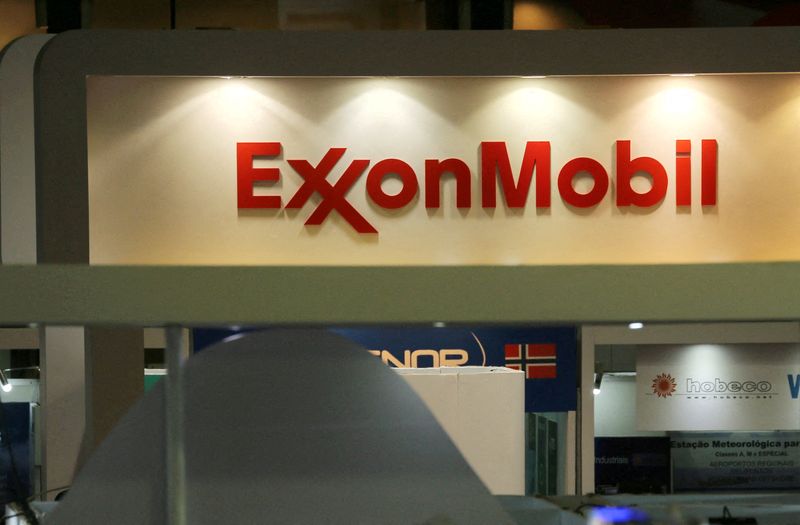By Sabrina Valle
HOUSTON (Reuters) - Exxon Mobil Corp (NYSE:XOM) on Tuesday reported a fourth-quarter profit of $8.87 billion, its largest in seven years, as the top U.S. oil producer benefited from strong energy prices.
The company slashed spending after fuel demand cratered two years ago. Since then, earnings have topped pre-pandemic levels, helped by the rise in oil prices, with the global oil benchmark Brent also at a seven-year high.
On Monday, Exxon disclosed a business shakeup to accelerate a $6-billion cut to operating expenses set in motion last year.
The revamping will "position us to lead in cash flow and earnings growth, operating performance, and the energy transition,” Chief Executive Darren Woods said in a statement.
A continuation of high oil prices would "cause us to increase the pace of the share repurchase program," Chief Financial Officer Kathryn Mikells said. Exxon restarted buybacks last month after a long suspension, with pledge to buy $10 billion by the end of 2023.
(Graphic: Exxon rises to a three-year high after earnings, https://graphics.reuters.com/EXXONMOBIL-RESULTS/lgvdwxnoapo/chart_eikon.jpg)
Shares in midday trading went up 5% to $80.02, near a three-year high.
OIL EARNINGS JUMP
"ExxonMobil closed a tumultuous year with results that can be described as solid," Peter McNally, global sector lead at research firm Third Bridge.
Exxon reported an adjusted profit of $2.05 per share, 11 cents above analysts' forecast as the bottom line benefited from soaring oil and gas prices, higher volumes and asset sales. In the same quarter a year ago, Exxon posted an adjusted profit of 3 cents a share.
Oil and gas production, Exxon's largest business, posted a $6.1 billion operating profit, the highest in two years. Earnings benefited from an 80% increase in oil prices and doubling of natural gas prices compared to 2020.
It now plans to raise production in the top U.S. shale basin by 25% this year, in addition to a similar increase last year in the Permian, where output reached 460,000 bpd.
Even with a substantial spending increase into the end of the year to $17 billion, Exxon managed to use the extra proceeds from oil prices to reduce debt, said Biraj Borkhataria, Co-Head European Energy Research at RBC Capital Markets.
DEBT REPAID
The company has eliminated the tab taken on during the 2020 downturn to keep paying dividends to shareholders. It has now returned to pre-pandemic debt levels, down $20 billion last year to $47.7 billion.
"We have been cautious on the Exxon investment case through the pandemic," said Borkhataria. "But we believe the overall sector tailwinds are likely to outweigh company-specific factors in 2022."
The company had flagged gains from asset sales and a $752 million, or 17 cents a share, hit to upstream results from impairment charges.

Its refining business posted fourth-quarter operating net of $1.4 billion, up sequentially and a big swing from a year ago when results were hurt by pandemic-related demand declines.
Chemical operating earnings were more than twice the profit a year ago when the business was hurt by the pandemic. Exxon said on Monday it would combine its refining and chemicals businesses.